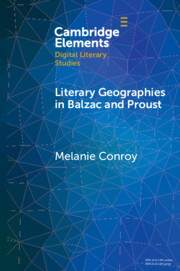Element contents
Literary Geographies in Balzac and Proust
Published online by Cambridge University Press: 17 November 2021
Summary
- Type
- Element
- Information
- Online ISBN: 9781108992923Publisher: Cambridge University PressPrint publication: 16 December 2021



